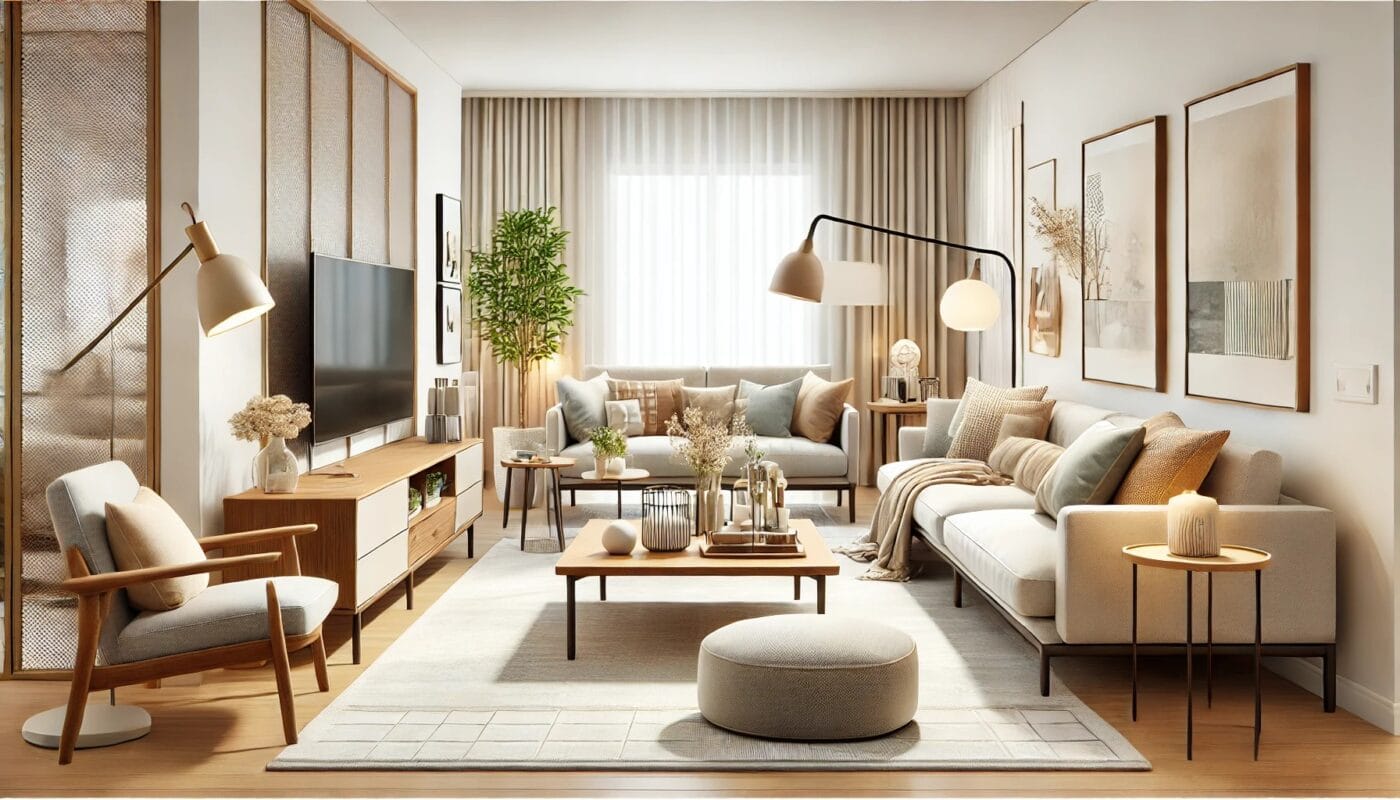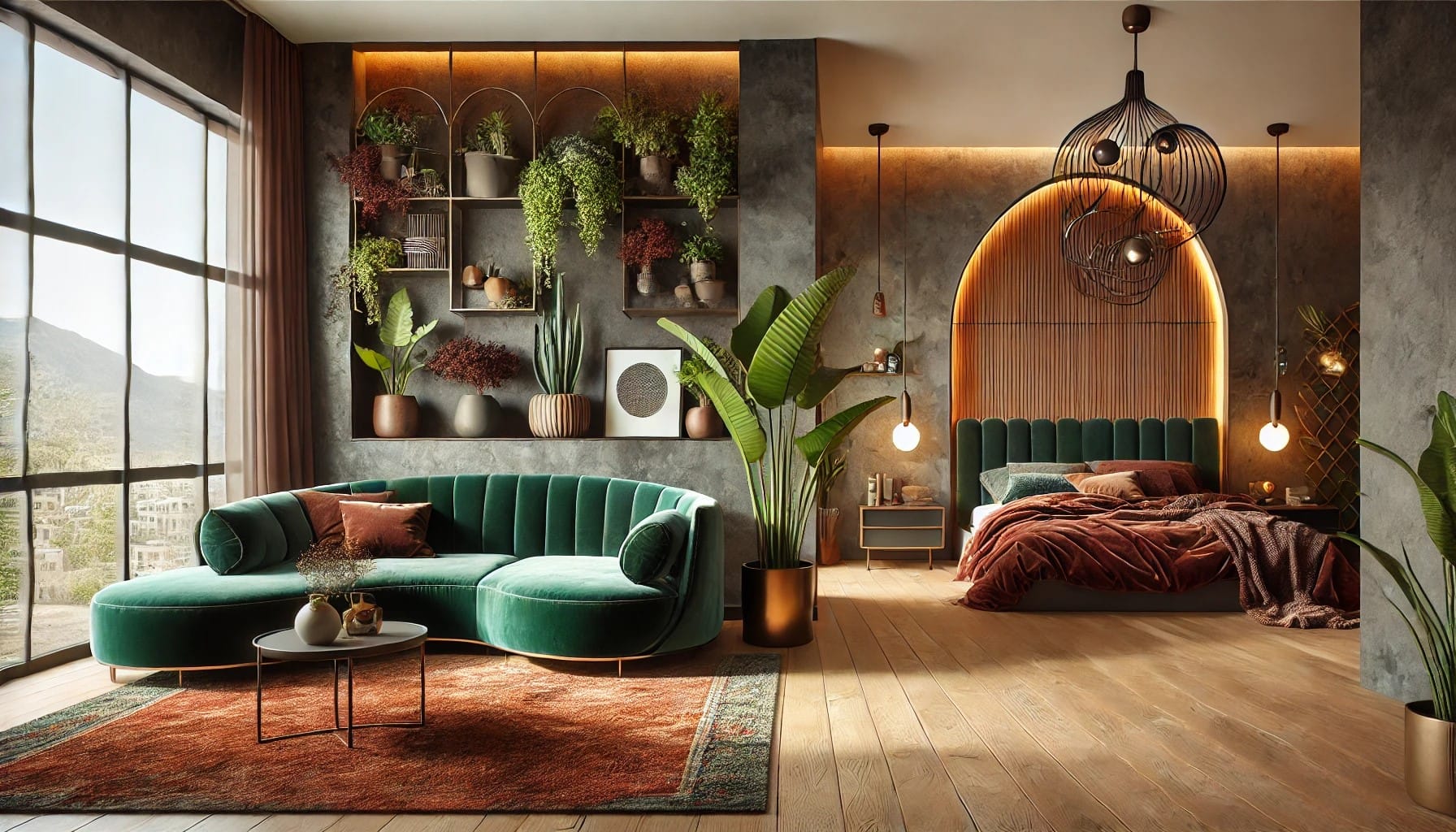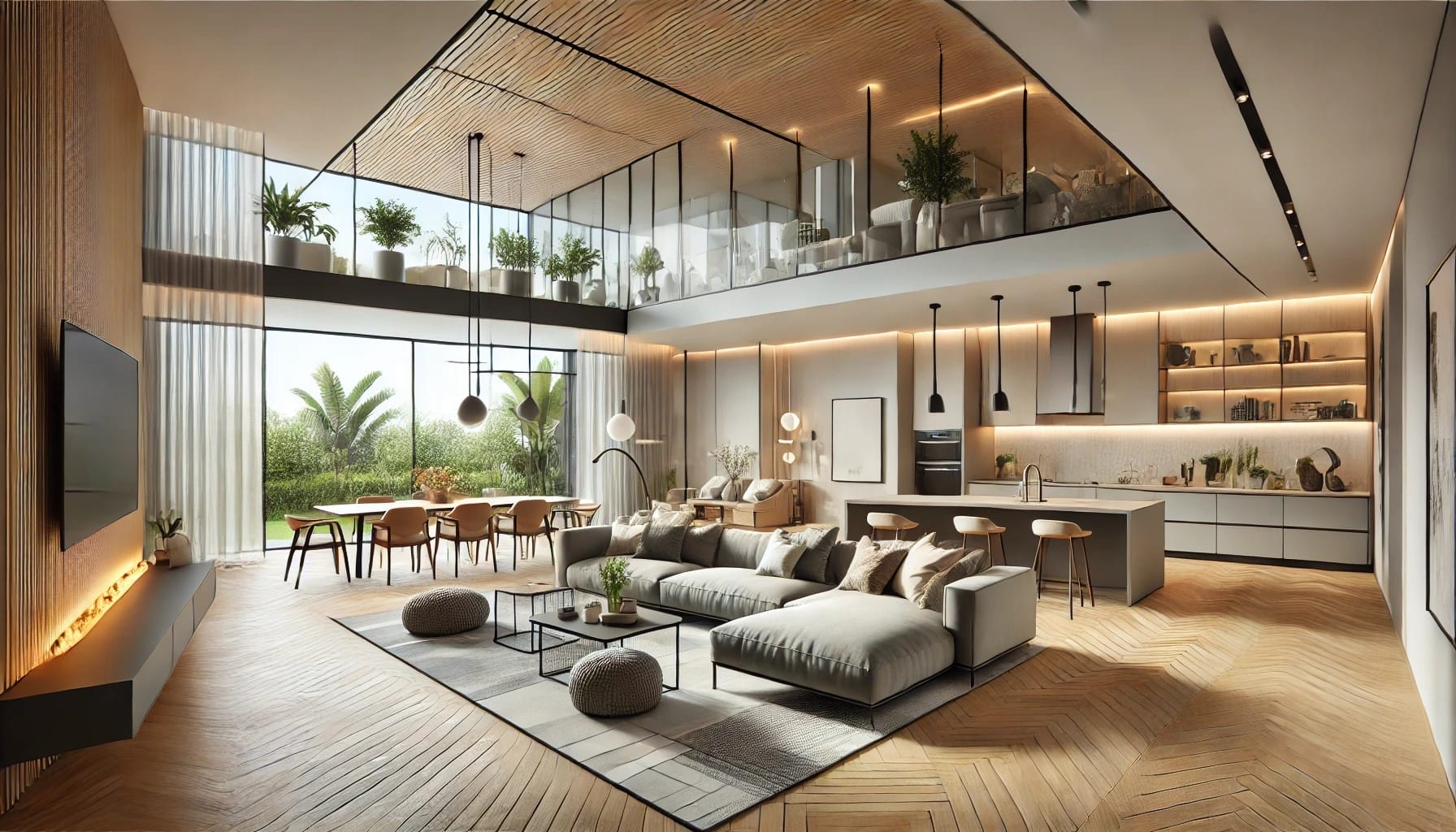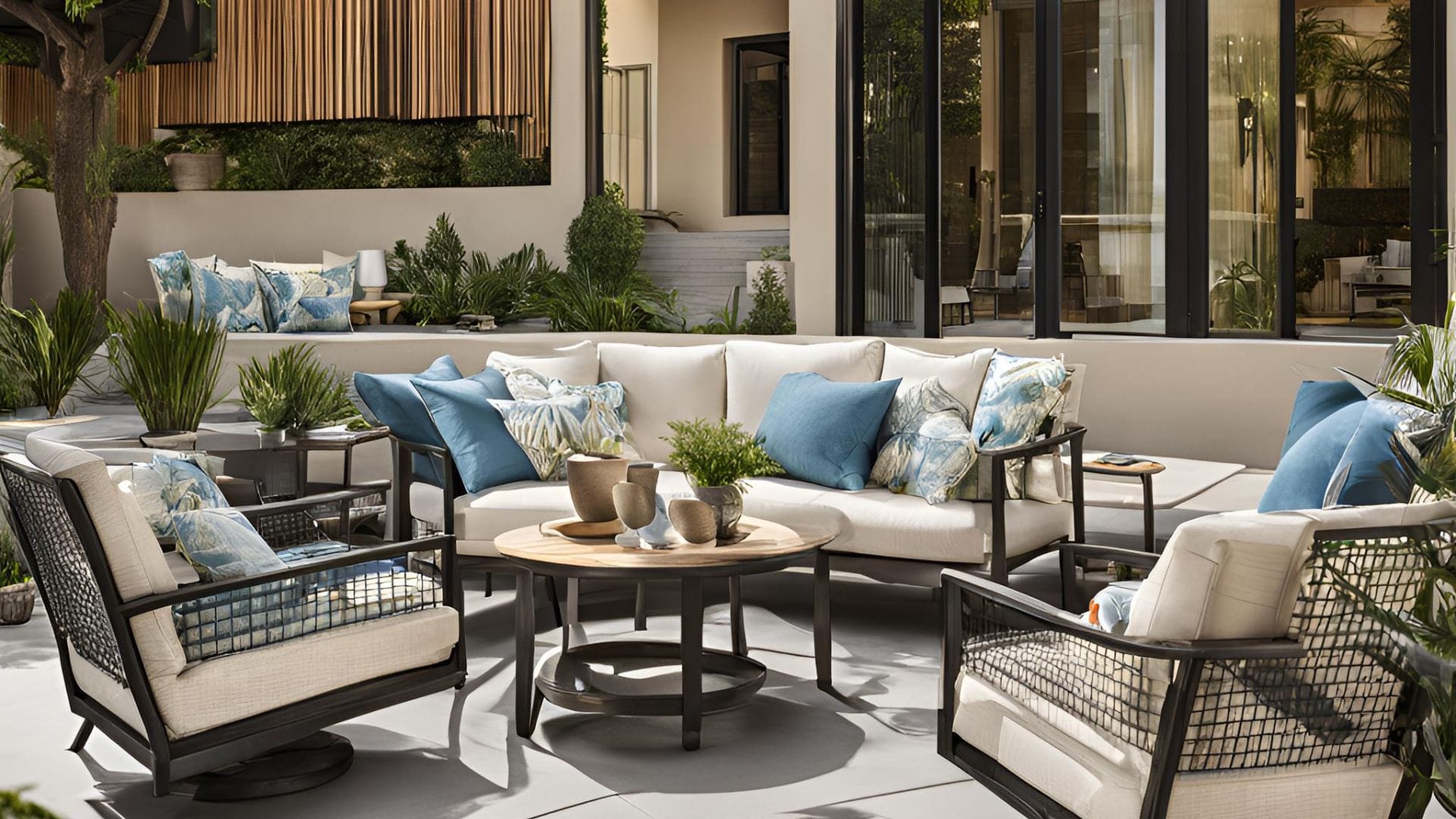Interior Design
The Ultimate Guide to Choosing the Right Furniture for Your Home
Choosing the right furniture for your home is a critical aspect of creating a harmonious and functional living space. Whether you’re designing a cozy apartment or a spacious family home, making informed choices can transform your interior design. In this guide, we’ll walk you through how to choose furniture for living room, the factors to consider when choosing household furniture, and tips for arranging furniture in small spaces.
Factors to Consider When Choosing Household Furniture
Selecting the right furniture for your home goes beyond aesthetics; it involves evaluating functionality, durability, and compatibility with your lifestyle. Whether you’re furnishing a single room or an entire house, the process can be simplified by understanding the factors to consider when choosing household furniture. Here’s a detailed guide:
1. Purpose and Functionality
Before purchasing any furniture, clearly define its purpose.
- Primary Use: Is the item meant for seating, sleeping, dining, or storage? For example, a dining table should accommodate your household size and potential guests.
- Multi-Functional Options: For smaller spaces, look for furniture that serves multiple purposes, such as sofa beds, ottomans with storage, or extendable dining tables.
2. Space and Size
The dimensions of your home significantly influence your furniture choices.
- Room Measurements: Accurately measure your space to ensure the furniture fits comfortably without overcrowding.
- Scale and Proportion: Large furniture in a small room can feel overwhelming, while tiny pieces in a spacious room may look out of place. Choose pieces that are proportional to the room size.
- Layout and Flow: Leave enough space for easy movement and pathways around the furniture.
3. Style and Aesthetic Compatibility
Furniture should complement the overall theme and decor of your home.
- Design Theme: Decide whether you want a modern, classic, rustic, or eclectic look and select furniture that aligns with that style.
- Color Scheme: Choose colors that harmonize with your wall paint, flooring, and other decor elements. Neutral tones offer versatility, while bold colors add character.
- Material and Finish: The material (wood, metal, glass) and finish (polished, matte, textured) contribute to the furniture’s appearance and should match your style preferences.
4. Durability and Quality
Investing in durable, high-quality furniture ensures that it withstands daily use and lasts for years.
- Material: Solid wood, metal frames, and high-grade upholstery are examples of durable options.
- Construction: Check for sturdy joints, smooth finishes, and secure fastenings. Avoid pieces that wobble or feel flimsy.
- Brand Reputation: Buy from reputable brands or retailers known for quality craftsmanship.
5. Comfort and Ergonomics
Furniture should provide physical comfort and support, especially for items like sofas, chairs, and beds.
- Seating: Test chairs and sofas to ensure they offer proper lumbar support and cushioning.
- Mattresses: Choose mattresses with the right firmness and material based on your sleeping preferences.
- Ergonomic Design: Desks and chairs should promote good posture, especially if used for extended periods.
6. Maintenance and Care
Consider how much effort is required to maintain the furniture.
- Ease of Cleaning: Furniture in high-traffic areas or homes with kids and pets should be easy to clean. Look for stain-resistant fabrics and materials like leather or treated wood.
- Reparability: Go for furniture with parts that can be replaced or repaired, such as cushions with removable covers.
7. Budget and Value for Money
Establish a budget before shopping to avoid overspending.
- Prioritize Essentials: Invest more in items that are used daily, like sofas, beds, and dining tables.
- Mix and Match: Combine high-end pieces with budget-friendly options to create a balanced look without breaking the bank.
- Longevity: Spending slightly more on durable, timeless pieces can save money in the long run compared to frequent replacements.
8. Household Needs and Lifestyle
Your household’s unique needs should guide your furniture choices.
- Family Size: Choose furniture that accommodates your household, such as an extendable dining table for larger families.
- Children and Pets: Opt for durable, scratch-resistant, and easy-to-clean materials if you have kids or pets.
- Hobbies and Activities: If you work from home, prioritize ergonomic office furniture. For entertainment, invest in comfortable seating and a functional TV unit.
9. Environmental Impact
Sustainable and eco-friendly options are becoming increasingly popular.
- Recycled Materials: Look for furniture made from recycled or upcycled materials.
- Certified Wood: Choose furniture made from FSC-certified wood, which ensures responsible forestry practices.
- Eco-Friendly Manufacturing: Support brands that use sustainable production methods.
10. Customization Options
Customized furniture can meet your specific requirements in terms of size, color, material, and design.
- Tailored Dimensions: Ideal for odd-shaped rooms or small spaces.
- Unique Styles: Create one-of-a-kind pieces that reflect your personality.
- Added Features: Incorporate functional elements like built-in storage or modular designs.
By keeping these factors in mind, you can make informed decisions when choosing household furniture that suits your space, style, and lifestyle. Thoughtful furniture selection ensures a cohesive and functional home that serves both aesthetic and practical purposes.
Selection Criteria for Furniture: Living Room Essentials
Your living room is one of the most frequented spaces in your home, making it essential to carefully select furniture that balances aesthetics, functionality, and comfort. Here’s an expanded look at the key elements for selection criteria for furniture in your living room.
1. Sofas and Chairs: Comfort Meets Style
The sofa is often the centerpiece of the living room. Here’s what to consider:
- Size and Scale: Measure your living room to ensure the sofa and chairs fit comfortably without overwhelming the space. For smaller living rooms, consider compact sectionals or loveseats.
- Comfort: Prioritize soft cushions and supportive frames. Try out various models to find one that feels right for lounging or entertaining.
- Style: Match the sofa’s design to your overall theme—be it modern, minimalist, or classic. Neutral colors work well for versatility, while bold hues or patterns can serve as a statement piece.
Style and Fabric: Cohesion and Practicality
Accent chairs are an excellent way to inject character into your living room, but their style and upholstery deserve careful consideration. Aim for visual harmony—select chairs in colors and materials that echo or thoughtfully contrast with your sofa. This doesn’t mean everything must match perfectly; mixing textures (like pairing a velvet accent chair with a linen sofa) can add depth and interest while still looking cohesive.
Beyond aesthetics, think about practicality. Choose soft yet durable fabrics, especially if your living room sees daily use or if children and pets are part of the picture. Easy-to-clean materials such as microfiber, performance blends, or treated cotton can stand up to everyday life while maintaining their good looks. Ultimately, your accent chairs should complement your overall design scheme and be inviting enough for guests (or yourself) to settle in comfortably.
2. Coffee Tables: Functionality in Focus
A coffee table serves as a functional and aesthetic anchor for your seating area.
- Height and Proportion: Choose a table that sits level with or slightly below the height of your sofa cushions for optimal comfort.
- Shape and Size: Round tables are ideal for smaller spaces and minimize sharp edges, while rectangular tables can complement larger living rooms.
- Storage Options: Tables with built-in storage or shelves are perfect for keeping remote controls, magazines, or books within reach.
3. Storage Units: Declutter and Organize
Storage units like cabinets, sideboards, and shelves keep your living room tidy while adding character.
- Functionality: Consider multipurpose units, such as a TV stand with drawers or a display shelf that doubles as a storage unit. Choose a media console that fits your TV and provides enough storage for devices, games, or decor. Opt for pieces that blend practicality with your room’s aesthetic to keep clutter at bay without sacrificing style.
- Design: Look for materials and finishes that harmonize with the rest of your furniture. For example, wooden units add warmth, while glass or metal creates a modern vibe.
- Placement: Position storage units against walls or in corners to maximize floor space, ensuring easy access without disrupting the flow of the room.
4. Accent Furniture: The Finishing Touch
Accent furniture, such as ottomans, benches, or side tables, enhances the functionality and decor of your living room.
- Ottomans: These can serve as footrests, extra seating, or even a makeshift coffee table. Some ottomans come with hidden storage, which is great for small spaces.
- Side Tables: Ideal for holding drinks, lamps, or decorative items. Choose tables with a consistent design to tie the room together.
5. Rugs: Soft Furnishings to Anchor the Room
Rugs are not just for comfort but also for defining different zones in an open-plan living room.
- Size: Ensure the rug is large enough to fit at least the front legs of your furniture.
- Material: Wool and synthetic fibers are durable and easy to maintain.
- Design: Choose patterns and colors that complement your furniture and wall colors.
6. Lighting Fixtures: Create Ambiance
Lighting plays a crucial role in enhancing the living room’s functionality and mood.
- Table and Floor Lamps: These add a warm glow and are perfect for reading corners.
- Overhead Lighting: Use statement chandeliers or recessed lighting for general illumination.
- Layered Lighting: Combine different sources of light to create depth and ambiance.
Task Lighting vs. Ambient Lighting: Finding the Right Balance
When planning your living room’s lighting, it helps to understand the roles that task and ambient lighting play.
- Ambient lighting serves as the room’s main source of illumination, setting the overall mood and helping you move around safely. Think of overhead fixtures like ceiling lights, recessed lighting, or even large floor lamps that wash the space in a gentle glow.
- Task lighting, on the other hand, is focused and practical. It’s designed to illuminate specific areas where you read, work, or enjoy hobbies. A reading lamp next to your favorite chair or a directed sconce above your workstation ensures you have just the right amount of light where you need it.
Layer these lighting types to create a flexible and inviting atmosphere. For example, use ambient light for general use and supplement it with a task lamp when you’re curling up with a novel or tackling a crossword on the sofa. This way, your living room can effortlessly shift from bright and lively for gatherings to calm and cozy for quiet evenings.
7. Accessories and Decor
While furniture is the backbone of your living room, accessories bring personality to the space.
- Throw Pillows and Blankets: These add color, texture, and comfort.
- Artwork and Mirrors: Wall decor like framed art or mirrors can make the room feel larger and more inviting.
- Plants: Incorporate greenery to bring life and freshness to the space. If you’re short on time or square footage, consider low-maintenance indoor plants like snake plants or pothos. Not much of a green thumb? Faux plants are a simple, hassle-free way to add color and vibrancy without the upkeep.
Factors to Consider When Choosing Soft Furnishings
Soft furnishings play a vital role in enhancing the comfort, style, and functionality of your living spaces. They include items like cushions, curtains, rugs, upholstery, and throws. While they may seem like minor details, these elements have a significant impact on the overall aesthetic and feel of your home. Here’s an in-depth look at the factors to consider when choosing soft furnishings:
1. Material and Fabric Quality
The material of soft furnishings greatly influences their durability, comfort, and appearance.
- Durability: Go for high-quality materials that can withstand daily use. For example, choose stain-resistant and durable fabrics for cushions and sofas in homes with children or pets.
- Texture and Feel: Fabrics like velvet or silk offer a luxurious feel, while cotton or linen provide a more casual and breathable option.
- Climate Suitability: Heavier fabrics like wool are ideal for colder climates, while lighter options like cotton or chiffon work well in warmer regions.
Comfort and Size Matter
While material is essential, comfort and size are equally important. Select a sofa or chair that feels inviting and suits the way you live—whether that’s curling up with a good book or hosting friends for movie night. Make sure the piece fits well in your space, both visually and physically, complementing the room’s design rather than overwhelming it. A thoughtfully chosen sofa, for example, should be both a haven for relaxation and a seamless part of your décor.
2. Color and Pattern
Soft furnishings contribute to the color scheme and visual harmony of your space.
- Color Matching: Select colors that complement your walls, furniture, and other decor. Neutral tones are versatile, while bold colors can serve as accent pieces.
- Patterns and Prints: Consider whether you want plain fabrics for a minimalist look or bold patterns to add vibrancy. Mix and match patterns thoughtfully to avoid visual clutter.
To tie the room together, stick to a color scheme that runs throughout the space. Start with a neutral base—think soft grays, creamy whites, or gentle taupes—and then layer in bolder hues with accessories like pillows, throws, or artwork. This approach adds personality without overpowering the room, letting you refresh your style easily as trends or tastes change.
3. Functionality and Practicality
Soft furnishings should not only look good but also meet your functional needs.
- Light Control: For curtains, consider blackout options to block light in bedrooms or sheer fabrics to let in natural light in living areas.
- Sound Absorption: Rugs and heavy curtains can help reduce noise, creating a quieter and more comfortable space.
- Ease of Maintenance: Look for fabrics that are easy to clean, especially in high-traffic areas. Machine-washable or spot-clean-friendly materials are excellent choices.
4. Size and Proportion
The size of your soft furnishings should be in proportion to the furniture and space they occupy.
- Rugs: Ensure the rug is large enough to define the seating area, with furniture either fully or partially placed on it.
- Curtains: Choose curtain lengths that match the height of your windows. Floor-length curtains create a dramatic effect, while shorter options work for casual spaces.
- Cushions: Avoid overloading sofas with too many cushions, as it can make the seating feel cramped.
When considering the size of core furniture like your sofa, always take your room’s dimensions into account. There should be enough space for walkways and other furniture, so the room feels open and comfortable rather than overcrowded. An oversized sofa in a small space can overwhelm, while something too petite in a spacious room risks feeling lost. Thoughtful proportion helps every element—large and small—work together to create a balanced and inviting space.
5. Style and Aesthetic Appeal
Soft furnishings should align with the overall interior design theme of your home.
- Contemporary Designs: Clean lines, geometric patterns, and neutral tones work well for modern spaces.
- Classic Looks: Rich fabrics, ornate patterns, and warm colors are perfect for traditional interiors.
- Eclectic Styles: Combine textures, colors, and patterns to achieve a creative and personalized look.
Choosing a style for your living room sets the stage for all your design decisions. Whether you gravitate toward the crisp minimalism of modern décor or the inviting charm of traditional spaces, having a clear style in mind will make selecting soft furnishings much easier and ensure a cohesive atmosphere.
That said, don’t be afraid to mix and match. Introducing a vintage ottoman alongside a sleek, contemporary sofa can add depth and character, giving your space a unique, curated feel. The key is balance—blend elements thoughtfully so your living room feels intentional rather than chaotic. Whichever direction you choose, let your personality shine through for a space that truly feels like home.
6. Purpose and Usage
Soft furnishings can serve various purposes beyond aesthetics.
- Comfort: Choose plush cushions and throws for added coziness in living rooms or bedrooms.
- Zoning: Rugs can define different areas within open-plan spaces, such as separating a dining area from a lounge.
- Statement Pieces: Use bold curtains or patterned cushions to create a focal point in the room.
7. Budget Considerations
Soft furnishings are available at various price points. While it’s tempting to go for cheaper options, investing in quality pieces ensures longevity.
- Mix and Match: Combine high-end items with budget-friendly pieces for a balanced look.
- Seasonal Updates: Change cushions or throws seasonally to refresh the space without breaking the bank.
Set a clear budget before you start shopping. Knowing how much you’re willing to spend will help narrow down your choices and prevent overspending. Keep in mind that it’s often worth allocating more of your budget to pieces you use daily—such as a well-made sofa, an area rug, or a favorite throw—while saving on accent items or decorative details that don’t see as much wear.
Remember to leave a little wiggle room for finishing touches. A new cushion, playful ottoman, or textured throw can make all the difference and add personality without a hefty price tag. By prioritizing where you splurge and where you save, you’ll create a space that feels both curated and comfortable.
8. Sustainability and Eco-Friendliness
If sustainability matters to you, opt for environmentally friendly options:
- Organic Fabrics: Choose soft furnishings made from organic cotton, hemp, or recycled materials.
- Ethical Production: Look for products from brands that practice fair trade and eco-conscious manufacturing.
Soft furnishings are the final layer of your home’s decor, bringing warmth, texture, and personality to your interiors. By carefully considering these factors, you can select pieces that elevate your space while meeting practical needs. Whether you’re reimagining your living room, bedroom, or dining area, thoughtful choices in soft furnishings make all the difference.
How to Arrange Living Room Furniture in a Small Space
Arranging furniture in a small living room requires careful planning to create a space that feels open, functional, and inviting. A well-thought-out layout can make even the tiniest room appear spacious and comfortable. Here are some practical tips on how to arrange living room furniture in a small space:
Start with Measurements
Before moving any furniture, grab a sheet of paper and your favorite pen. Take the time to measure your walls, floor space, and ceiling height. Knowing the dimensions of your room is essential—you’ll want pieces that fit comfortably without overwhelming the area. In a roomy setting, a generous sectional might be perfect, but in a smaller space, that same piece can leave things feeling cramped. Measure twice, move once!
Consider Traffic Flow
Think about how people move through your space. Identify areas where people frequently walk or gather, and arrange your furniture to ensure that pathways are clear. This creates a natural flow and helps your living room feel both functional and welcoming.
1. Define a Focal Point
Start by identifying the main feature of the room, such as a fireplace, television, or large window. Arrange your furniture around this focal point to create a sense of purpose and flow.
- Place the sofa directly facing the focal point or at an angle to maximize visibility.
- If your living room has no natural focal point, use a statement piece like a large artwork or a feature wall to anchor the arrangement.
2. Use Multi-Functional Furniture
In small spaces, every piece of furniture should serve more than one purpose.
- Sofa Beds: Go for a sofa that doubles as a bed for guests.
- Storage Ottomans: Use these for extra seating, a coffee table, or hidden storage.
- Nesting Tables: These can be tucked away when not in use but provide additional surface area when needed.
3. Prioritize Open Space
Avoid overcrowding the room by leaving clear pathways for movement.
- Floating Furniture: Instead of pushing all your furniture against the walls, try floating key pieces like a sofa or chairs in the center of the room. This creates the illusion of more space.
- Minimal Furniture: Stick to essentials. A sofa, a single armchair, and a coffee table are often enough for a small living room.
4. Scale Your Furniture Appropriately
Choose furniture that matches the size of your room. Oversized pieces can dominate the space and make it feel cramped.
- Look for slim-profile sofas and chairs with exposed legs to create a sense of airiness.
- Go for a smaller coffee table or no coffee table at all if it obstructs movement.
5. Make Use of Vertical Space
When floor space is limited, take advantage of your walls.
- Shelving: Install floating shelves to store books, decor, or plants without taking up floor space. Shelving units offer additional storage and display space while helping you keep things organized. Opt for styles that don’t overwhelm the room—a few neatly arranged shelves can add function and style without creating clutter.
- Tall Furniture: Use vertical storage solutions like tall bookcases or cabinets to draw the eye upward and make the room feel larger. Keeping shelves tidy and curated helps maintain an open, airy feel while showcasing your favorite pieces.
6. Go for Light Colors and Reflective Surfaces
Light colors and reflective materials can make a small room appear more spacious.
- Neutral Palettes: Use light-colored furniture and soft furnishings to brighten the space.
- Mirrors: Strategically place mirrors to reflect light and create the illusion of depth.
- Glass Furniture: Glass-top coffee tables or acrylic chairs add functionality without visual bulk.
7. Zone the Space
Create distinct zones within the small room to organize functionality.
- Use a rug to define the seating area.
- Add a small side table with a lamp to designate a reading corner.
- Position a slim console table against the wall for additional workspace or storage.
8. Arrange Furniture for Conversation
Even in a small space, it’s essential to foster a welcoming layout for social interaction.
- Face-to-Face Seating: Arrange chairs and sofas to face each other, creating a natural conversational circle.
- Corner Solutions: L-shaped sectionals or corner seating maximize seating while utilizing awkward spaces.
9. Go Minimal with Decor
A cluttered room feels smaller than it is. Simplify your decor to open up the space.
- Stick to a few key decorative pieces, such as a statement vase or a single piece of art.
- Keep surfaces like coffee tables and side tables free of unnecessary items.
10. Add Layers and Height
Even in small spaces, layering adds dimension and character.
- Use cushions and throws to add texture to your sofa.
- Incorporate tall floor lamps or hanging pendant lights to draw the eye upward and add height to the room.
Mix Up Textures for Depth and Warmth
Layering isn’t just about piling on decor—it’s about mixing different materials to create a cozy, inviting space. Try pairing a plush wool rug with velvet pillows for softness underfoot and a touch of luxury on your seating. Add a sleek leather chair or a woven basket to introduce contrast and tactile interest. These combinations help your living room feel comfortable and visually dynamic without overwhelming the space.
By employing these techniques, you can make the most of a small living room while maintaining both style and functionality. Thoughtful furniture placement, strategic storage solutions, and a clean design aesthetic ensure the space feels open, balanced, and welcoming.
Additional Factors Affecting the Selection of Furniture
- Environmental Impact: Go for eco-friendly materials.
- Lifestyle Needs: Consider pets, children, or elderly family members when selecting furniture.
- Customization Options: Tailored furniture can better meet your specific needs.
Why Choose Nyolenju Structures Limited for Interior Design?
At Nyolenju Structures Limited, we pride ourselves on creating stunning and functional interiors tailored to your lifestyle. Our expert team specializes in furniture selection, interior design, and optimizing spaces to reflect your personality. Whether you need guidance on furniture selection interior design or arranging small living spaces, we’re here to help.
Contact Us Today!
Ready to elevate your home’s interior? Contact Nyolenju Structures Limited for unparalleled interior design services. Let us transform your vision into reality!




